Ball Pythons cannot live together. Cohabiting them leads to a range of potential issues, that can be health-related or behavioral. Competition for food, spreading contagious diseases, and unwanted breeding are just a few of the possible outcomes. This is mostly because of how they behave in the wild.
In this article, I’ll take you through the main reasons why Ball Pythons shouldn’t live together, and explain how their natural history plays a big role in their social (or not-so-social) behavior. But first, you can hear me talk about why I don’t keep my snakes together in the video below:
Ball Python social behavior in the wild
In nature, Ball Pythons are solitary creatures that usually only frequent other members of their species for breeding. To us humans, who are a social species, this can seem quite odd.
Nonetheless, once you look at the Ball Python breeding strategy, and all the things they compete for, it starts to sink in that they have a lot to compete for, and making them live together is not a good idea.
Many species of vertebrate have a specific breeding strategy that they use for mating or copulating and stick to most of the time. The strategy used by wild Ball Pythons is promiscuity, also known as polygynandry. In this breeding strategy, males mate with multiple females (polygyny) and females mate with multiple males (polyandry).
This might make them sound like social animals, but they really aren’t: it is only to mate that they will meet up. They are not in the habit of spending time with each other unecessarily, or ever spending time together asides from breeding.
This means that you can’t cohabit Ball Pythons. Housing them together is never recommended. If they aren’t able to get away from each other, and the competition involved, then a number of negative outcomes can occur.
Ball Pythons are competitive
While it sounds kind of like no strategy whatsoever, polygynandry is in fact a phenomenally successful way of breeding a healthy, competitive population. Males compete and fight for females, sometimes driving each other away with intense, moody wrestling matches.
On their part, females evict males they don’t like, or even ones they tired of, making sure they get a wide choice of possible fathers for their clutch. This is how they’ve evolved to reproduce over millions of year in their natural habitat in central Africa.
Even after copulating, the competition continues. Hobbyist breeders often notice clutches that are sired by two males, rather than just one.
This is because females choose which sperm to use through something known as cryptic female choice (it’s a whole other subject – I’ll do a post on it at some point!). In these “dual-sire” clutches it isn’t always a 50/50 split, however.
This leads most people to agree that there is competition between the individual sperm to fertilize the eggs once released. It may also mean that female cryptic choice is able to select sperm that is more genetically compatible.
For males it means that even if they mate with a female, they have no guarantee of siring a clutch. They need to find as many females as possible to raise their chances!

Risks of cohabiting Ball Pythons
As you might imagine, forcing animals to live together when they wouldn’t normally choose to can create all kinds of problems. Some are easier to spot than others, so let’s go over the most common issues I’ve seen from fellow keepers over the years. They include:
- fighting for dominance
- stress
- cannibalism
- spreading disease
- spreading parasites
- increased risk of illness
- unwanted breeding
1. Fighting for dominance
This doesn’t look anything like the image that’s just popped into your head! Ball Pythons don’t battle it out unless it’s two males, in which case they have a wrestle match that is almost difficult to recognise as a fight.
When a male and female, or two females fight for dominance they do it in a subtle way. Unless you know what to look for, you might never even spot it. If kept in the same enclosure, each snakes will learn where the warmest spot is, or the best hiding place, then try to hog it.
The result will be the heavier snake gaining dominance, then always pushing the less dominant snake into a more exposed or cooler part of the enclosure.
2. Stress and anorexia
The result of fighting for dominance is always the same: stress, then anorexia. A Ball Python that feels uncomfortable in its enclosure will become stressed over a period of time and eventually stop eating.
This could take a week, or several months, but the result is always the same. Along the way, some snakes will also beging to regurgitate from chronic stress.
3. Cannibalism
Cannibalism – or one snake eating another of the same species – is extremely rare in Ball Pythons. That said, it has happened. I’ve been shown photos of one baby that’s somehow managed to swallow another.
So, even though it’s rare, why take the risk? It’s better to be safe than sorry, especially as it’s us who are responsible for every one of our pets’ safety.
4. Spreading disease
This one’s simple: if you put two snakes together and one has a contagious disease, then the other will catch it! One this point, it’s particularly important to point out that new snakes should always be quarantined, and never put in with another in their first month – even for breeding.
5. Spreading parasites
Like contagious diseases, parasites often rely on physical contact between animals to spread, or at least close proximity. External parasites like snake mites (I HATE SNAKE MITES!) are easy to spot, but internal parasites can be a lot more difficult.
Pentastomida, or tongue worms, are one such example. They live in the lungs of snakes and other animals, and often generate no physical symptoms for years. In fact, most cases are diagnosed by accident after an animal gets an x-ray in which dark spots are visible in the lung tissue.
6. Increased risk of illness
Something that is important for us to understand with captive snakes is how stress affects immune response. It’s a complicated topic but in a nutshell, high stress = lower resistance to illness.
If you keep two Ball Pythons together and they get stressed, they are much more likely to get sick. This usually presents itself in the form of opportunistic diseases like mouth rot (stomatitis) or respiratory infections.
7. Unwanted breeding
If you keep two Ball Pythons together and one “female” actually turns out to be a male, you will be getting eggs at some point. What will you do?
Will you go down the road of freezing or discarding the eggs (something I’d find deeply depressing). Or will you incubate them and try to deal with around 7 new baby snakes to house and feed? If you’re not sure about it, the best answer is to keep them separate.
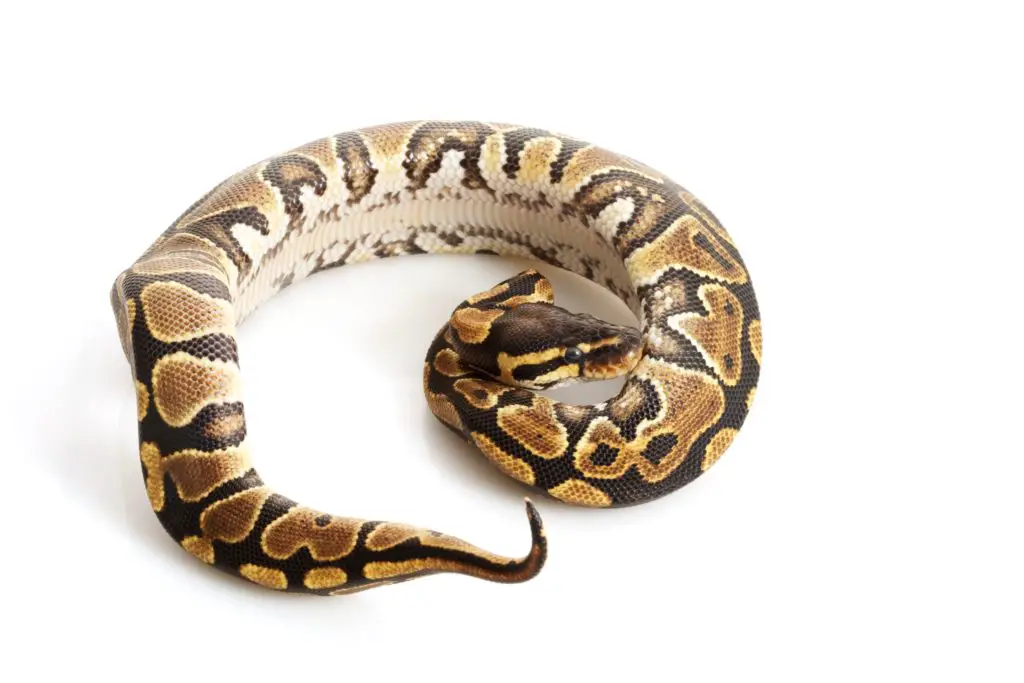
Can Ball Pythons be around each other?
Before we go any further, I just want to mention that what I’m talking about in this post is how Ball Pythons will behave towards each other on their own turf. They can be around each – under strict supervision.
Don’t be afraid to handle two in the same room. As a general rule, pet Ball Pythons quickly realise that you are in charge of their environment, and they stay pretty chilled out when you’re handling them. There’s no way they’ll try to race across the room to fight each other with you there!
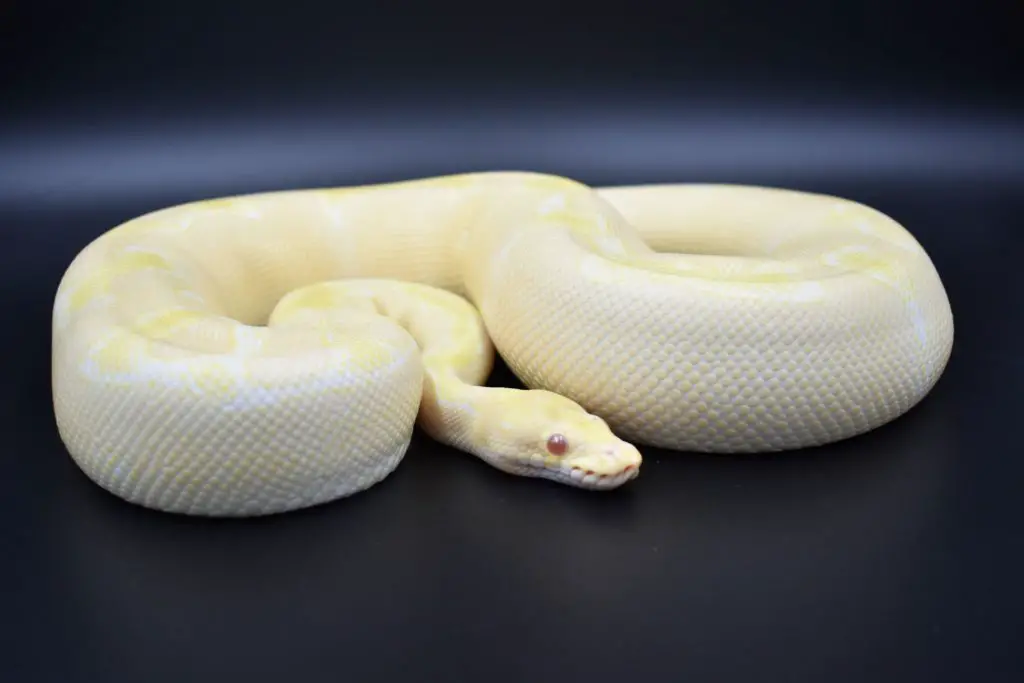
Ball Python stress response
What does all this competition mean for captive Ball Pythons? Well, it means that there is only one thing this gentle, laid-back snake really hates: another snake on its turf!
An adult Ball Python, or even a baby Ball Python, for that matter, wants its own enclosure, own water bowl, own hiding place, own basking spot, etc.
In a captive situation, one Ball Python may eventually realise that it can’t evict another one that has (misguidedly) been housed with it. Lacking the aggression needed to kill it, it will simply try to ignore it, get away from it, or shove it around.
Over time this would settle down, but the stress from being housed together would not disappear. In Ball Pythons, stress can take more than one form.
Signs of stress
When under intense stress Ball Pythons become extremely restless, and seem to be constantly exploring, even during the day. This often occurs when placed in a new enclosure and can last a few days to a couple of weeks.
It also occurs when the animal’s humidity levels or temperature gradient are wrong, or if it is experiencing health issues. (for more on this, read my article: Why is my Ball Python trying to escape).
Unfortunately, being cohabited can be cause as much stress or more than any of the common problems I’ve just listed, and you’ll quickly notice an agitated snake that repeatedly poops everywhere.
Low-level stress is much harder to spot, however, and generally results in feeding issues that can drag on for months. They literally just stop eating when something is bugging them, and won’t strart again until it’s gone.
In my experience, this is what eventually happens when two Ball Pythons are housed together. If they don’t fight right from the get-go, it instead causes long-term, low-level stress and one or both to go off food.
Before you ask, yes – I have tried keeping Ball Pythons together. I was a beginner once too and did a lot of things wrong when learning to keep reptiles! I tried to give them enough room, a bigger enclosure and all that stuff. Obviously, it didn’t work.
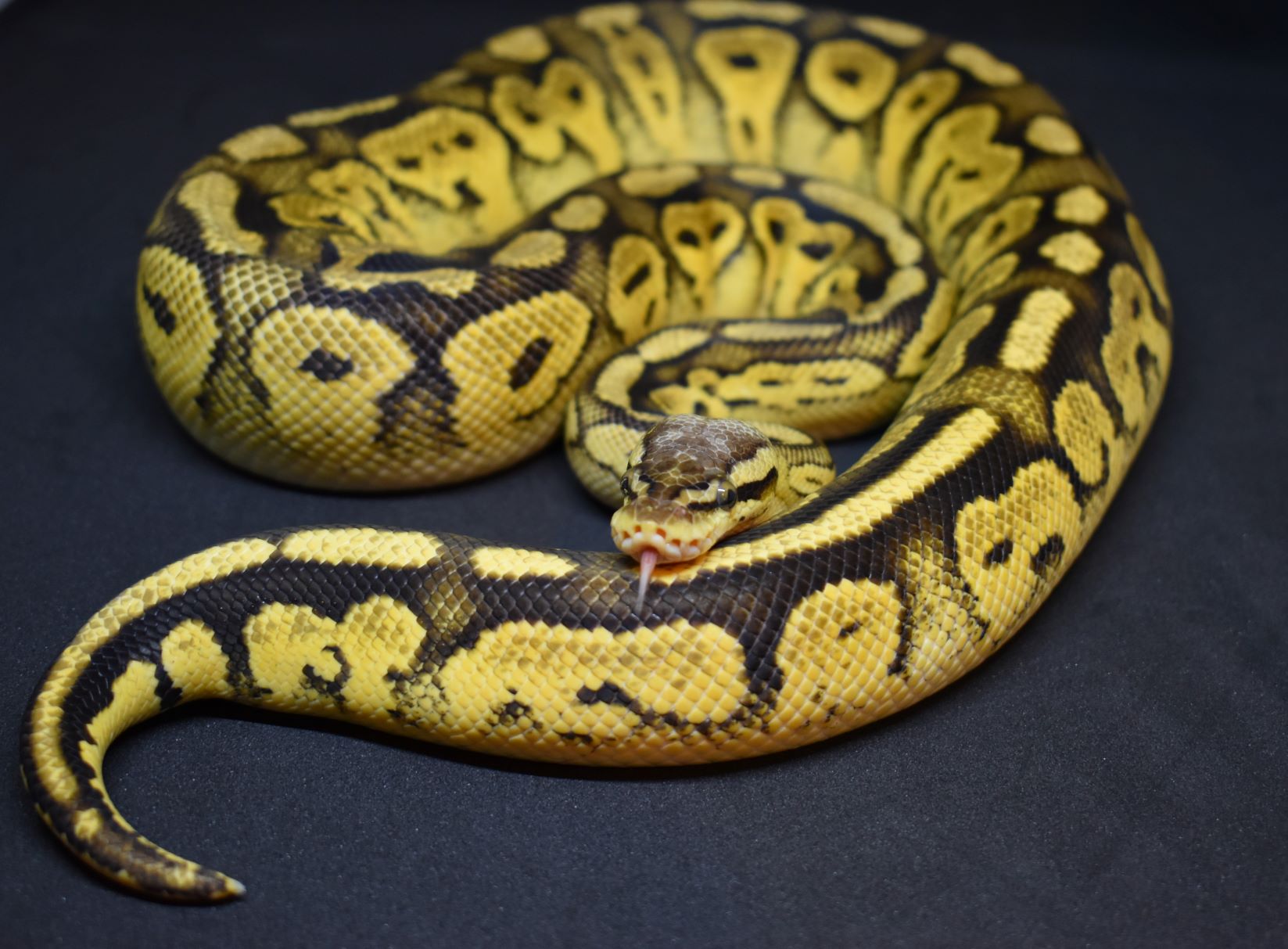
Is it safe to keep two Ball Pythons together?
In all honesty, it isn’t safe to keep two Ball Pythons together. I know what you’re thinking: They’re harmless, fat little snakes, surely it can’t be dangerous to keep them together?
Well, it depends on what you call dangerous. Are they likely to eat each other or battle to the death? Probably not. I know every other care sheet mentions the risk of cannibalism, but it is extremely rare for this species.
Really, the only time that could happen would be if you offered two snakes the same prey item, which is obviously a bad idea, be it with pythons, boas, Milk Snakes or harmless little Corn Snakes. In fact, the only snake species that to be pretty much safe to feed in the same enclosure are Rough Green Snakes, some Garters and some Water Snakes.
All things considered, stress and anorexia are the main dangers likely to occur. And though Ball Pythons can go an exceptionally long time without eating, let’s not forget that stress also lowers immune response in reptiles, and can lead to heightened susceptibility to infections.
The risk to health
Respiratory infections in particular seem to occur in snakes that have a compromised immune system due to poor hygiene or severe stress.
Here we get to another point: the diagnosis and treatment of illnesses are much harder when animals are housed together. Whilst a respiratory infection or scale rot is easy to spot (check out the health topic section of my Care Sheet), other illnesses and especially parasites are much harder.
In these cases, you need a stool sample. But whose stool is whose? Are both animals infected? Or just one? As you can guess, it all gets a little complicated.
The only way to find out would be you taking two animals to a vet for diagnosis rather than one. That modest amount of money you saved by housing them together will disappear faster than you can say “lesson learned”!
Will two male Ball Pythons fight?
Two male Ball Pythons will definitely fight, especially during breeding season. To look at it, it isn’t that bad. They hiss and shove each other, and act extremely moody.
They would never bite each other, much less kill each other. They just want to gain a monopoly over female snakes in the area, and don’t hesitate to have a non-lethal fight to get it.
The problem is that this kind of fighting is to establish dominance. In the wild, the loser would get out of the area ASAP! In a captive situation, he can’t though. He has to stay in an enclosure with a guy who has just beaten him up.
The result is intense stress, a refusal to eat, and eventually death. These are important things to think about, especially if you plan on breeding your snakes.
There is no way, whatsoever that a stressed-out male Ball Python is going to breed when he’s getting regular beatings and living in a stressful environment.
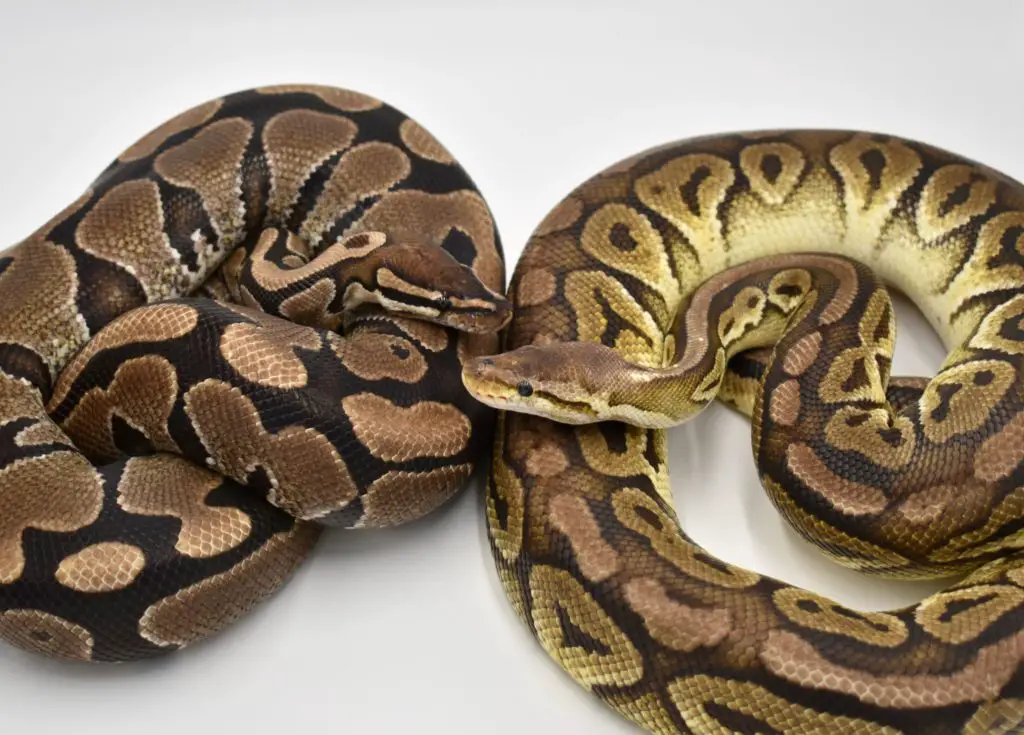
Will two female Ball Pythons fight?
I like female Ball Pythons. They’re chilled out, peaceful creatures that often tend to be more relaxed than the males.
Surely, they could live together, right? Well unfortunately no – two female Ball Pythons cannot live together. They don’t usually fight outright, but will still make each other miserable.
They do act very peaceful, it’s true. And they don’t fight like the males do. But they compete – albeit subtly. the problem is that at a glance it’s very hard to gauge social interaction between two animals that don’t communicate verbally asides from the occasional hiss.
You might not see your females competing, but trust me – they are. Compared to males, the females get the tough part when it comes to breeding. They need to gain enough weight to provision a clutch of eggs, then find a nice, humid place to lay them which is neither too hot nor too cold. This is all they care about!
What happens when you put two females in the same tank can be unremarkable at first. You may not see any real stress response, or even a drop in feeding response for the first few months. One day, however, you’ll notice that one female is always in one hiding place, and the other is always in another.
Bullying between females
This won’t be true preference though; it will simply be that the heaviest or most forceful female will always be getting the spot it wants. Female two, on the other hand, will not have the same choice of hiding place or warm spot it would if female one wasn’t there!
The result is – once again – chronic stress and a long-term impact on health. Poor feeding response will eventually ensue.
Excessive fat burn and weight loss can also occur when a Ball Python is unable to thermoregulate successfully by picking its favourite hiding spot. If you want to breed Ball Pythons, skinny females are something you really want to avoid.
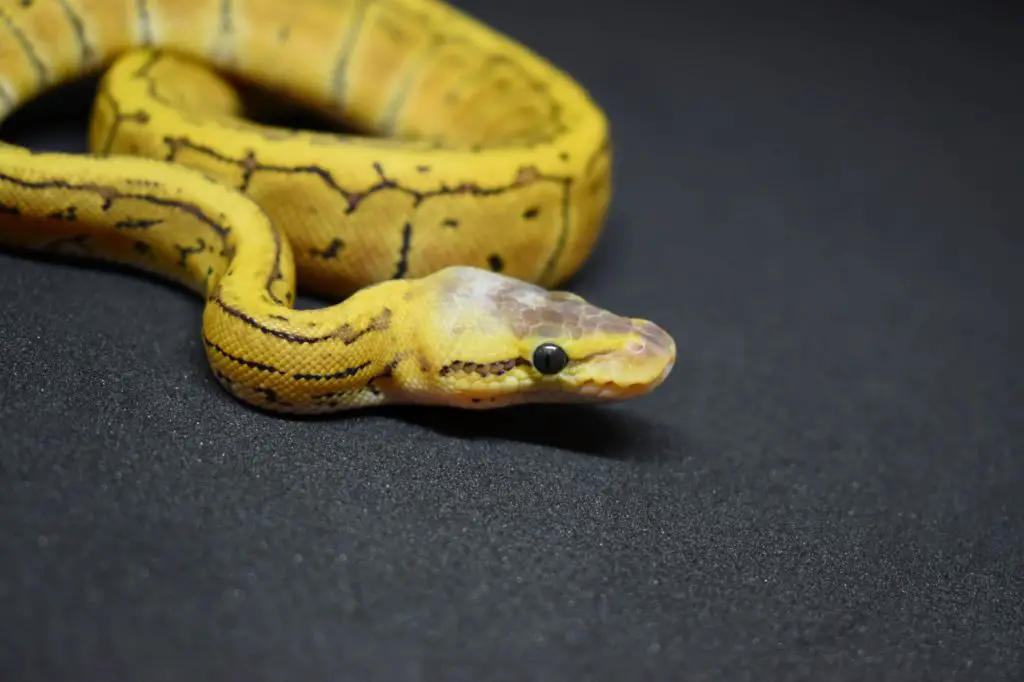
Can a male and female Ball Python live together?
Whilst this scenario may work out in the short term, a male and female Ball Python cannot live together forever.
Obviously, if you house a male and female Ball Python together, you probably will get eggs at some point. As a hobbyist breeder myself, I can tell you that hatching eggs is incredibly exciting.
Notwithstanding, snakes don’t always sell fast. No matter how hard you try, you could end up caring for the babies for many months. It’s always worth considering this scenario…
If you do decide to breed your Ball Pythons, I still don’t think trying to house males and females together is worth it. The cons just outweigh the pros.
One of the main issues is that male and females don’t always synchronize their breeding too well. Your female may stop locking (copulating) with a male many months before she lays eggs. During this time, the male may still be “all go” and harass her relentlessly.
Unsurprisingly, the last thing a female wants when going through the stress of egg development is harassment from a male. She may just lose her temper and try to evict him with violent shoving.
If you’ve seen this happen, you’ll know that the male can take a real beating. Again, the result will probably be a male that sulks and goes off food for an extended period.
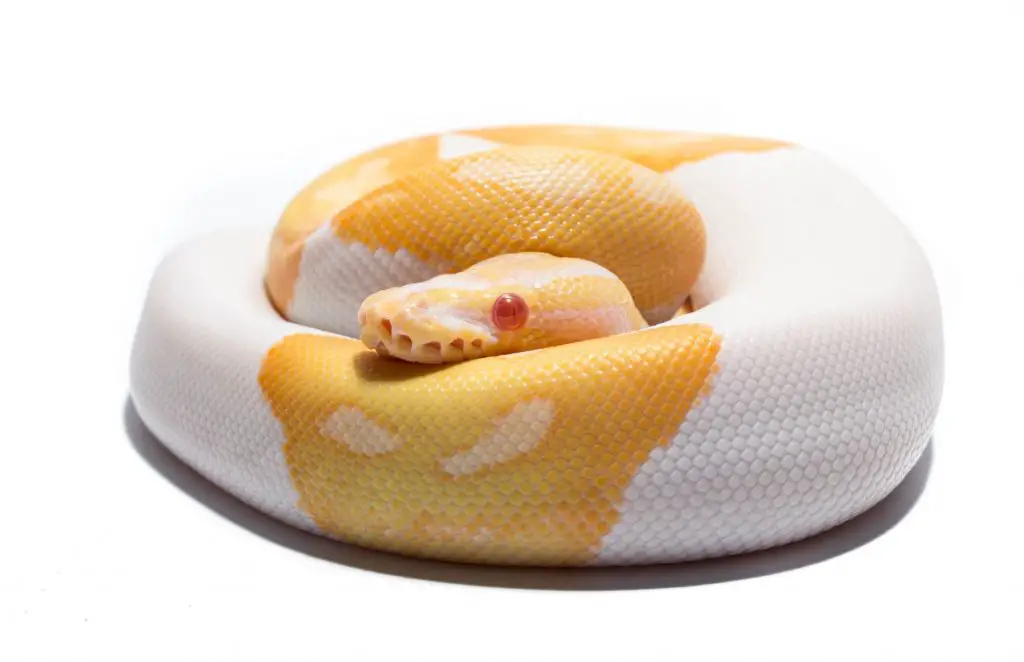
Only put males and females together for copulation
Personally, I introduce one male at a time to a female’s tub for a period of three days. If a lock happens during this time, I remove him as soon as it’s over. This is as much time as they ever spend together.
Out of the great many breeders I have known, this is the method that the majority use. Some of these people aren’t just hobbyists like me either – they do it for a living.
After years of dealing with hundreds of animals, they know how to keep their snakes happy and healthy. If they say keeping them together for breeding doesn’t work well – you can bet they’re probably right.
What snakes can live together?
When you consider these factors, and the obvious hygiene and disease control issues, housing two Ball Pythons together is simply not worth the small amount you may save on enclosures.
And although it’s hard for us to understand, Ball Pythons don’t get lonely – they actually find each other quite annoying.
One thing I would say, however, is that animals that do thrive in colonies can be a lot of fun! And if you like the idea of keeping several snakes together in a big display enclosure, there are a few types of snakes that seem to do this really well. One example would be the Rough Green Snake (Opheodrys aestivus), who seems to be perfectly happy in small groups.
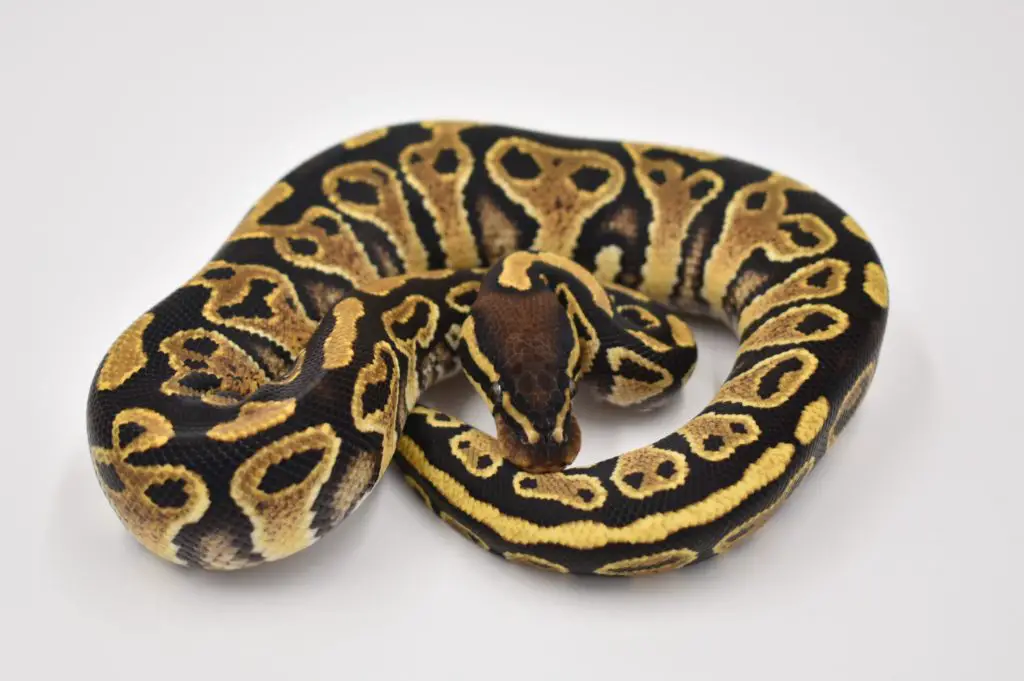
List of pet snakes that can live together:
| Name: | Habits | Are they good pets? |
| Garter Snakes | Terrestrial or semi-aquatic | Yes |
| Water Snakes (Nerodia sp.) | Semi-aquatic | Yes |
| Rough Green Snakes | Arboreal | Yes |
| Smooth Green Snakes | Mostly terrestrial | No |
Note: Never try to keep Milk Snakes or King Snakes together as they are cannibalistic! Even Western Hognose Snakes and Kenyan Sand Boas have been observed eating each other. At the same time, remember that Rough Green Snakes are one kind of snake that thrives in a bioactive enclosure – this is possibly the best way to keep them.
Can Ball Pythons live together? Conclusion…
There are good reasons that it’s a bad idea to keep these otherwise friendly snakes together. They definitely have a docile nature, but as a pet owner it’s your job to give them what they need for good health.
This involves an individual enclosure for each individual snake, repleat with a warm side, cool side, fresh water and – just as important – peace and quiet.
They really don’t need social interaction or physical contact the way mammals do. For first-time snake owners this can be hard to understand.
After all, this is a docile snake that tolerates the occasional handling session and makes a great pet. Nonetheless, if you house them with another snake, you will quickly notice signs of stress. This is because the first negative effects of cohabitation are on their mental health.
Even younger snakes and hatchling ball pythons prefer to spend long periods of time hiding alone unless its feeding time. They really don’t want to make friends with other snakes, they’d much rather get all the food to themselves!
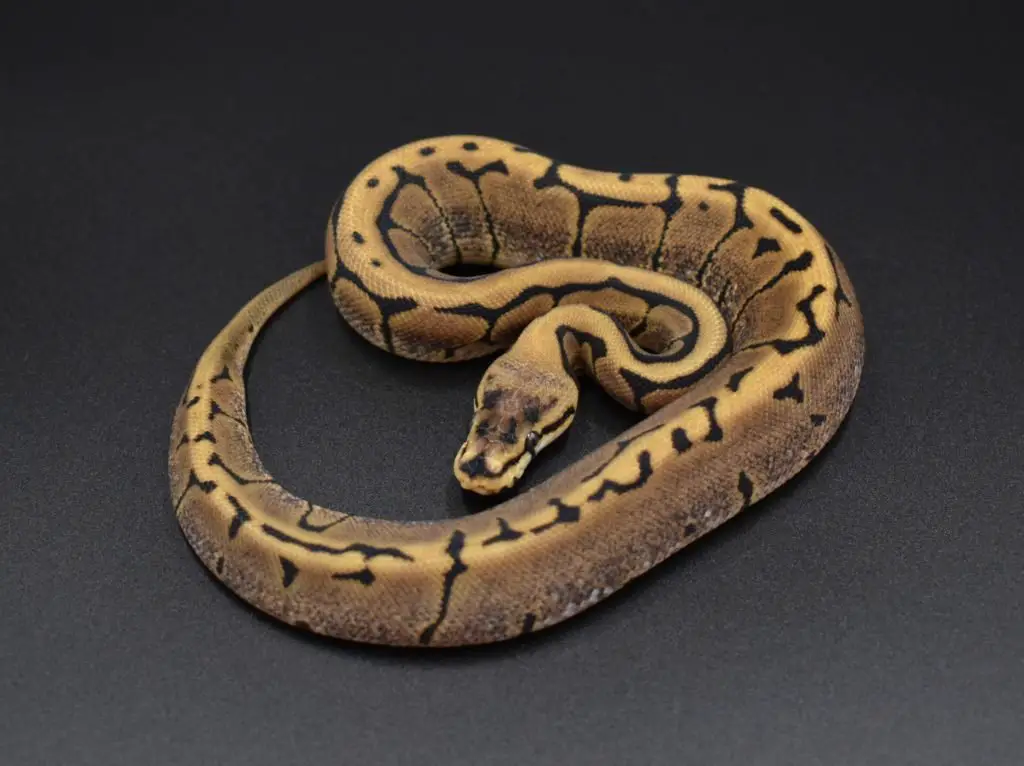
FAQ relating to Ball Python cohabitation
Can you house male and female ball pythons together?
You cannot house male and female Ball Pythons together. They should only be introduced to each other for a maximum of three days to lock (mate) during the breeding season. Most breeders recommend putting the male in with the female once a month to accomplish this. Afterwards, the male should always be returned to his own enclosure.
Can 3 Ball Pythons live together?
There are species or reptiles, particularly lizards, that can be kept in a trio for breeding. This usually means one male and two females. You can’t keep 3 Ball Pythons together, though. Sooner or later, one or all of them will get tired of sharing their space and begin to suffer from stress-related anorexia.
Will Ball Pythons fight each other?
Male Ball Pythons will fight each other for territory or access to females. The fights aren’t that impressive – more like a wrestling match. It’s important to remember, however, that losing a fight does inflict severe stress on a male, and being kept in an enclosure with a more dominant snake will lead to him stopping feeding.
Can you put two snakes in the same cage?
You can put two snakes in the same cage if they belong to certain species. Whilst Ball Pythons don’t do well if kept in the same enclosure, Rough Green Snakes, Garter Snakes, Ribbon Snakes and Water Snakes all seem to get along fine if they have enough space and food.
Also on this topic:
- Do Ball Pythons like tubs?
- Are Ball Pythons arboreal?
- How to find an escaped Ball Python
- Why is my Ball Python trying to escape?
For more on enclosures in general:
Back to the main topic page
